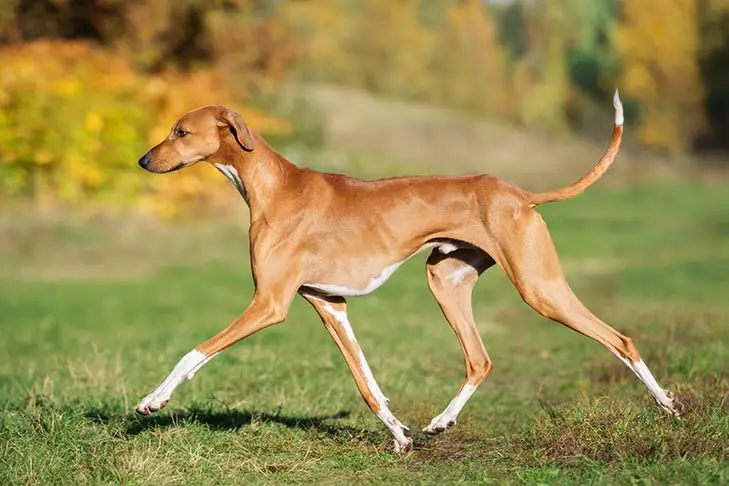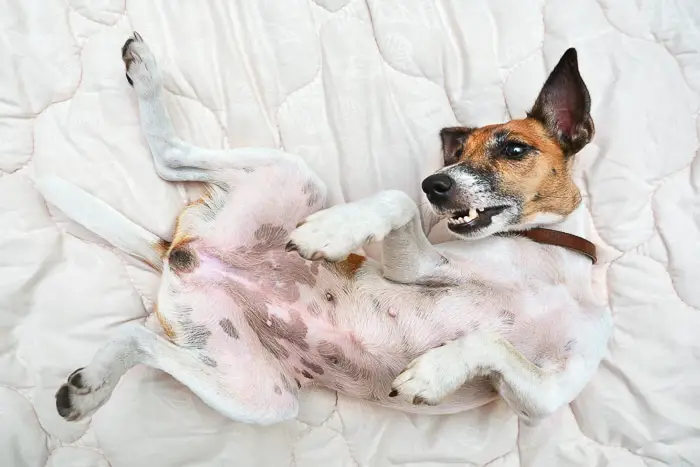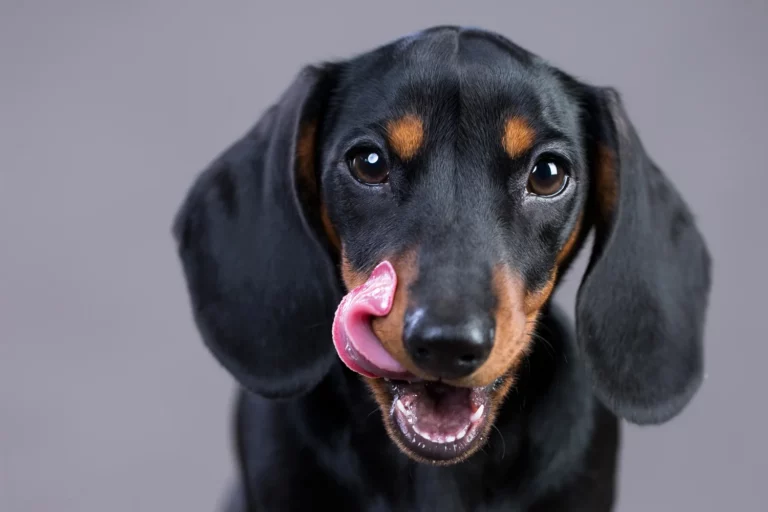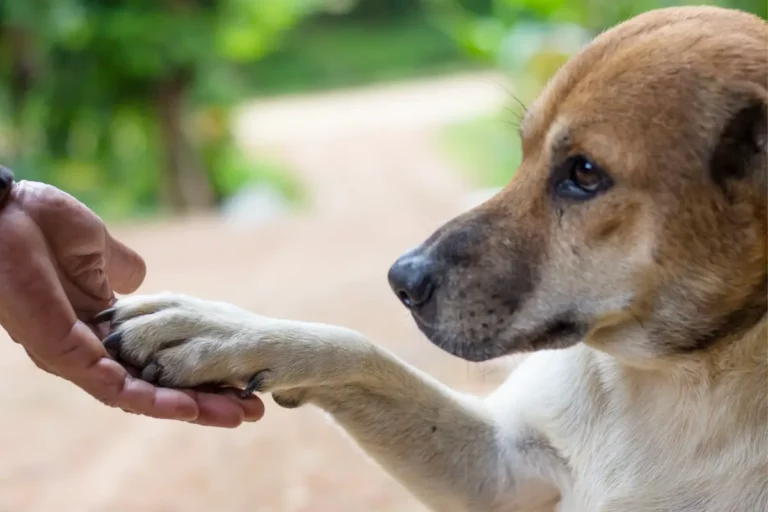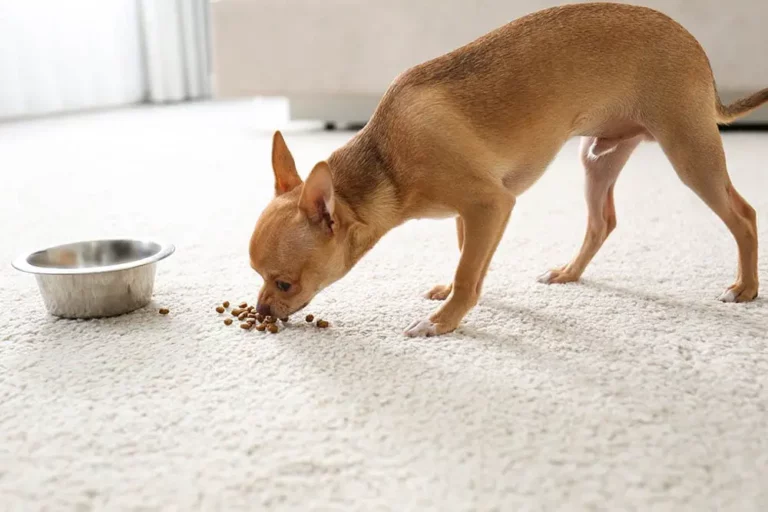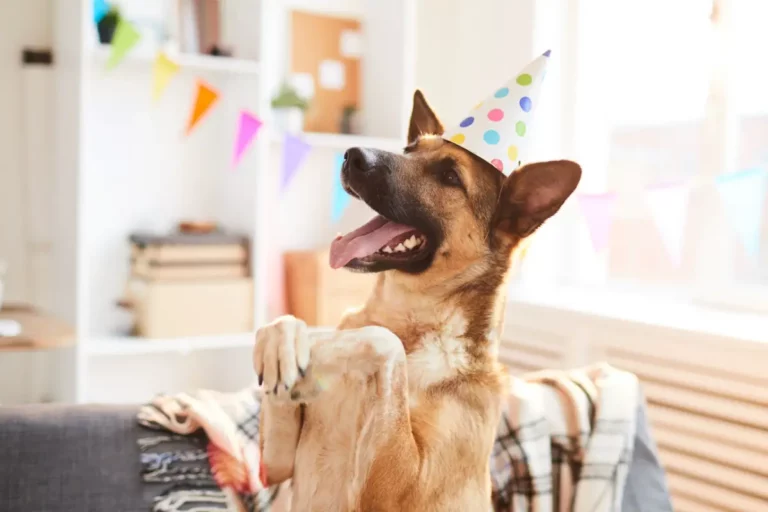Why Does My Dog Hump Pillows? (6 Reasons & How To Stop It)
Dog owners with a rambunctious, hump-loving canine are likely familiar with the embarrassing scene spawned by their doggos when they hump pillows, blankets, stuffed toys, other dogs in the park, or even your legs.
When your dog humps pillows, it’s basically a way of communicating excitement and their need to play or just an activity that they enjoy. Other reasons for this humping behavior include boredom, anxiety, stress, and health conditions that result in itchy or painful genitalia. Sexual arousal can also prompt this behavior and it is more common in unneutered dogs particularly when they experience a rise in their hormonal levels i.e. on heat.
One thing we can all have the same stance on is that watching your itty-bitty pup hump various objects and furniture at home isn’t the most astonishing sight.
Hence, let us look at the several reasons for this cringe-worthy act and possible remedies to curb it before it becomes habitual.
Key takeaways
Pillow humping can denote dominance, stress or excitement.
It may be attention-seeking or a sexual behavior in unneutered dogs.
It could suggest underlying health problems.
Training, distraction techniques and neutering can help manage this behavior.
Consult a vet if the behavior is excessive or sudden.
What You Need To Know About Dogs and Humping
Humping or mounting is an instinctive behavior in dogs and is not limited to male dogs only, as their female counterparts also engage in this act. A lot of people associate this behavior with sexual arousal.
According to ASPCA, humping behaviors in canines most times aren’t sexually motivated as we would assume. This proved to be true because spaying or neutering dogs doesn’t necessarily stop humping, however, this behavior is more common in their intact counterparts.
Humping can be important in doggo communication and it is often used to convert dominance when one dog mounts another. Also, it can be a sign of over-excitement or distress.
Although humping is not considered dangerous to dogs, for their owners, it is quite disgraceful, hence, it’s important to put a stop to this behavior. This can be achieved either by positive reinforcement, providing them with adequate physical and mental stimulation, or channeling their excess energy to other exciting activities.
Why Does My Dog Keep Humping Pillows?
Understanding the root cause of a behavior is usually the best way to tackle it. That said, here are some reasons why you may find your dogs humping anything on sight most especially your pillows.
1. Excitement
Dogs humping fluffy objects like pillows is usually a sign of excitement or exhilaration. If you happen to catch your pooch mounting a pillow, it could simply mean he is excited or enthusiastic at the moment. This over-excitement could be a result of having other canines over for a dog play session or seeing something exciting on the television.
You may want to pay close attention to the times your pup plays with other dogs because he would want to hump them at a time when he can’t handle the thrill of playtime any longer, or use your pillows for this activity if other dogs do not give him the opportunity to do so.
2. Anxiety and Stress
Dogs may resort to undesirable behaviors like nibbling at nearby objects, constant licking, barking, digging the earth, urination, and humping pillows when they are frustrated, bored, or stressed.
There are several factors that contribute to anxiety in dogs, but separation tops the list. Dogs are often bonded with their owners from whom they get comfort, food, and a feeling of security. In the absence of their owners, dogs find it difficult to cope and can become destructive even to the level of inflicting self-harm.
Another common cause of anxiety in dogs is fear. You can find this situation when dogs are newly exposed to different sights. For example, changing walk paths, moving to a new house, or meeting strangers could leave your pooch anxious. Fear is associated with loud noises like thunderstorms or fireworks
Regardless of the cause of anxiety, dogs will always find a way to communicate this feeling, and humping your pillow may just come in handy.
3. Sexual Arousal
The possible reasons for the pillow-humping behavior in your dog also include sexual arousal. Both male and female dogs are involved in this activity as this behavior is not restricted to male dogs alone.
It is also important to note that younger dogs under the age of one will hump more frequently than older dogs due to normal hormonal reactions or just to satisfy their sexual urge and derive pleasure.
Also, chances are that your doggie has previously observed other dogs mate. Hence, he may try to replicate the act by using a pillow or nearby objects.
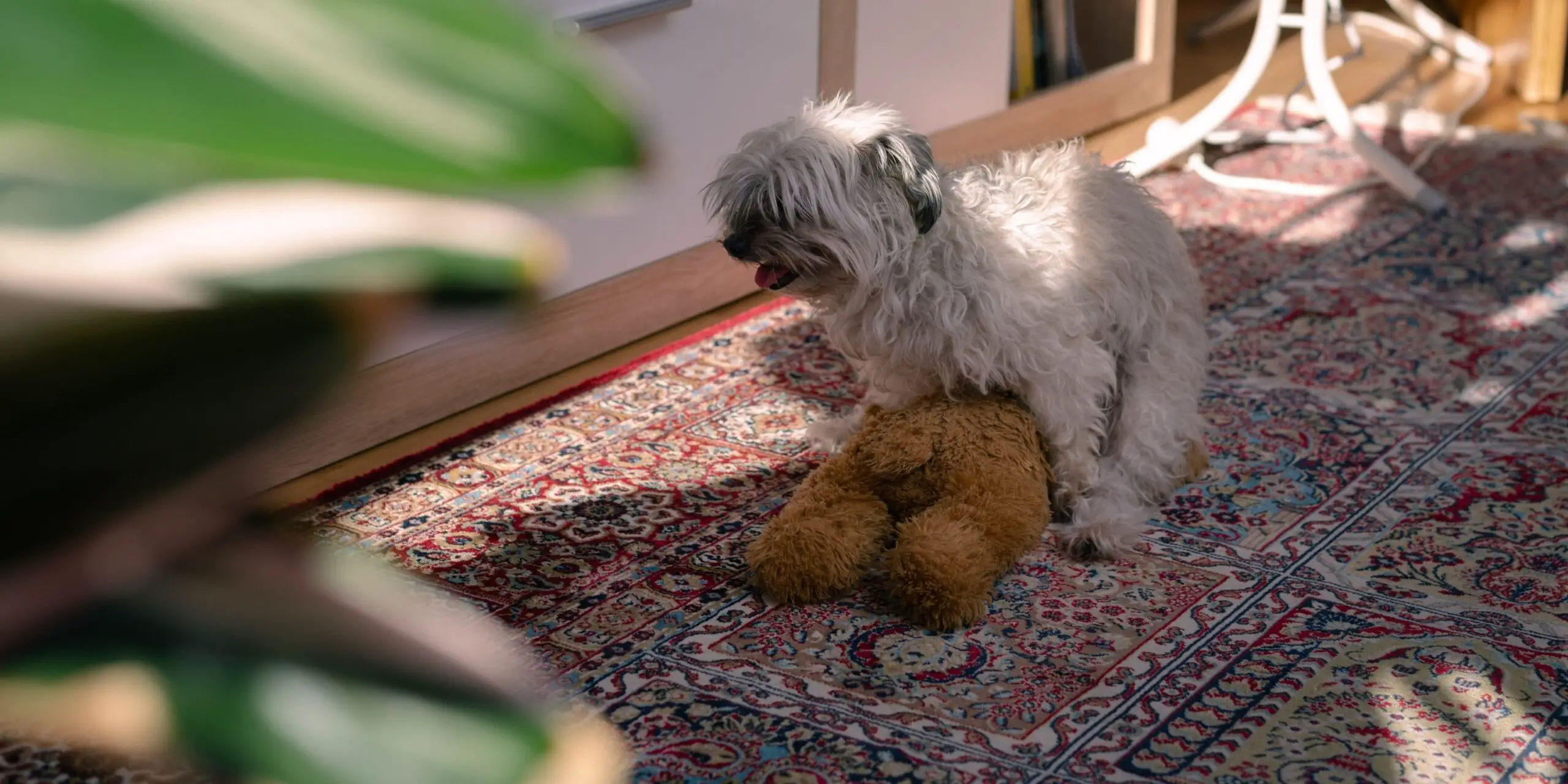
4. Medical conditions
In some cases, dog humping may be a result of health conditions. You may find your dog abruptly humping pillows like he’s in so much discomfort.
In this case, your dog may be suffering from prostate problems, anal gland impaction, skin problems, or urinary tract infections and would use your pillows to relieve himself of the pain he is feeling or to scratch an itch.
If this happens to be the case, you should conduct medical or physical examinations and seek the attention of your veterinarian.
Related:
5. For Pleasure and Relief
Dogs mostly find pleasure in what turns into a regular habit. In essence, if dogs derive enjoyment from humping pillows, they will just keep doing it.
Also, your little pooch may hump pillows to relieve his stress. For example, changing the routine of your dog to fit in with your schedule can lead to a feeling of distress and consequently responding by humping.
As a result, it’s essential to always ensure that your dog is in an easy state. Give them a balanced diet, enough exercise, and regular medical exams. Your adorable pup will always be thankful.
6. Lack of proper Socialization
Another reason why your dog may hump your pillows is that he has not been properly socialized and sees it as a playful activity.
Poorly socialized dogs mount pillows because they haven’t yet gotten the hang of how to play properly and can get overly aroused during play. If this behavior is not correct it may turn into a difficult habit to break.
Early socialization is important for all puppies in order to have a well-rounded personality and good manners while eliminating fear, and anxiety and building confidence.
What is my dog thinking?
Dogs often hump pillows as a way to relieve stress, self-soothe, or express excitement and energy.
Should You Let Your Dog Hump Pillows?
Well, humping is a normal behavior in dogs, and most times they wouldn’t need a go-ahead order to mount your pillow.
However, if you happen to catch your pooch in the act, it’s advisable to discourage this behavior, otherwise, your dog pooch may think it’s okay. Trust next time, he wouldn’t hesitate to take it to public places and then, it becomes a behavioral problem.
Also, try to inspect your dog to find out whether he’s in any pain or experiencing itchiness down there. Most times, you can never be so sure he’s okay, hence, medical oversight is required to ensure he is in good health.
If what we’re up against is no health issue, you should deploy effective training methods to deter this behavior. The section below provides more insight into this.
How Do I Get My Dog to Stop Humping Pillows?
Let’s face it, it’s pretty embarrassing when guests come over and your dog is humping a pillow. It’s almost as embarrassing as your dog actually humping your guest. With that in mind, here’s a step-by-step guide on how to stop/prevent this behavior:
- Step 1: Identify the cause Determine if the humping behavior stems from dominance, sexual arousal, playfulness, stress relief, or a medical issue.
- Step 2: Consult your vet If you suspect a medical issue, consult your vet to rule out any underlying conditions and seek professional advice.
- Step 3: Neutering or spaying If sexual arousal is the cause and your dog isn’t already neutered or spayed, consider having the procedure done to reduce hormone-driven behavior.
- Step 4: Establish boundaries Teach your dog not to hump pillows by redirecting their attention to appropriate toys or activities. If they begin to hump, interrupt them with a command like “Off” or “No“.
- Step 5: Provide ample exercise Ensure your dog gets enough physical activity and mental stimulation to reduce excess energy and alleviate boredom, which may contribute to humping.
- Step 6: Use positive reinforcement Reward your dog with treats, praise, or playtime when they exhibit good behavior and withhold rewards when they attempt to hump pillows.
- Step 7: Minimize triggers Identify and remove triggers, such as specific pillows, if your dog only humps certain items. Keep such items out of your dog’s reach.
- Step 8: Teach a “leave it” command Train your dog to respond to a “leave it” command, which can help prevent humping before it starts.
- Step 9: Address stress or anxiety If humping is a stress-relief mechanism for your dog, identify and address the sources of stress. Consider using calming aids, like pheromone diffusers or anxiety wraps.
- Step 10: Be consistent Persistence is key when modifying your dog’s behavior. Be patient and maintain consistency in your training approach, rewarding good behavior and discouraging humping.
Related:
Other (but similar) considerations
Although humping has been considered to be a natural behavior, there are ways to make your dogs desist from it or prevent it from getting out of hand.
The best time to stop your dog from humping is when you first notice it. Give your dogs command training by saying their names and asking them to “stop” or “get off”. Consistently doing this will get your dogs sensitive to those commands and will make them rethink humping your pillows again.
You can also attach positive reinforcements with the command training because dogs tend to obey more when they are given treats as rewards. This will help reshape their brains into understanding that humping is a negative behavior and that you will reward them if they stop it.
Another effective way to stop your dogs from humping your pillows is by diverting their attention to various fun activities when you see them do it. Get your pooch into playing a game of catch just to get it distracted. You should also try to observe the situations that trigger your dog’s humping.
If you notice that having a lot of pillows around gets your pup overly excited, simply taking pillows out of his reach might be a quick fix.
If your dog has not been desexed, he is more likely to exhibit humping behaviors. Some experts recommend neutering as a way to stop humping as well as anxiety in dogs but it is best to wait until the right age because early altering of your dog’s sexual organs could cause a series of medical conditions for the young pups.
When your dog is constantly humping your pillows, do not neglect the possibility of medical conditions. More often, your dog may have anal gland infection, UTIs, or skin allergies, and sometimes dogs might react to this condition by humping other times by scooting, whining, chewing, and so on.
If you are not quite sure about the cause of this humping, it’s better to be safe than sorry. Kindly seek the attention of medical experts.
Final Thoughts on Why Do Dogs Hump Pillows?
Understanding the reasons behind your dog’s pillow-humping behavior is crucial in addressing it effectively. By considering factors such as dominance, sexual arousal, playfulness, stress relief, or medical issues, you can identify the most appropriate approach to curb this behavior.
Remember that patience, consistency, and positive reinforcement are key in modifying your dog’s actions. If you have any concerns or doubts, don’t hesitate to consult a veterinarian or a professional dog trainer for guidance.
By addressing the issue thoughtfully and taking proactive steps, you can foster a harmonious and comfortable home environment for both you and your furry friend.

